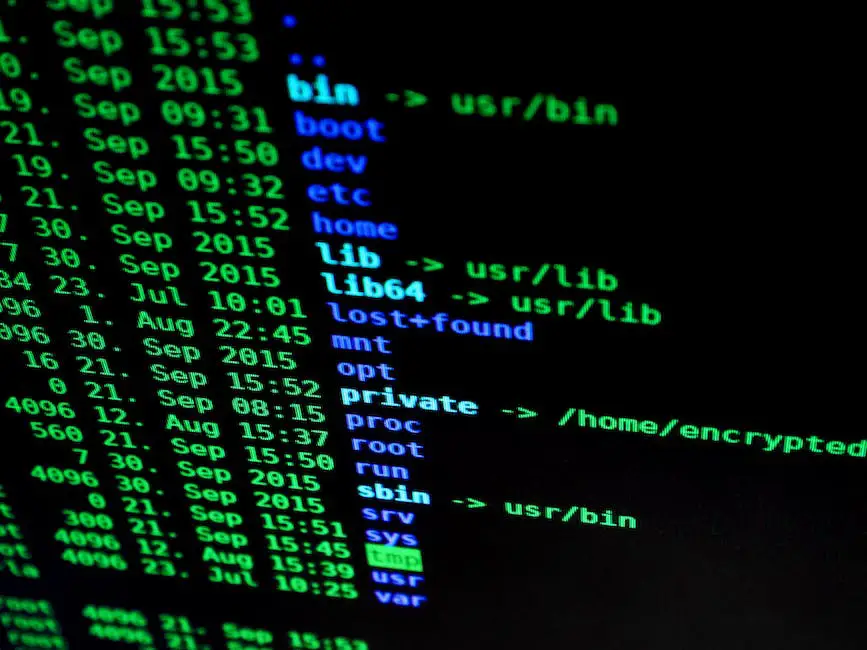In today’s highly connected world, cybersecurity has become a vital aspect of our digital lives, with new threats and vulnerabilities emerging constantly. The rapid advancements in technology, particularly in the field of artificial intelligence (AI), have significantly impacted the landscape of cybersecurity, creating both opportunities and challenges in protecting our data, systems, and infrastructures.
This essay provides an in-depth analysis of the relationship between AI and cybersecurity, exploring their fundamental principles, roles, and challenges, as well as the future implications of this dynamic relationship.
Understanding Cybersecurity
Table of Contents
- 1 Introduction to Cybersecurity in AI with AgentGPT
- 2 Potential Threats
- 3 Preventive Measures
- 4 Data Privacy
- 5 Continuous Learning
- 6 AI-Powered Cybersecurity: A Necessity in Modern Times
- 7 Advanced Threat Detection
- 8 Automation
- 9 AI-Driven Security Tools and Platforms
- 10 Challenges of Cybersecurity with AI and Agent GPT
Introduction to Cybersecurity in AI with AgentGPT
Understanding cybersecurity is crucial for enthusiasts and hobbyists who are interested in the fields of artificial intelligence (AI) and cybersecurity. With the rapid development of technology, the importance of protecting our digital assets and systems from various types of cyber threats has become paramount. The intersection of AI and cybersecurity provides new avenues to enhance the security of our digital infrastructures, as well as presenting unique challenges that must be addressed.
Potential Threats
One of the primary aspects to comprehend in cybersecurity is the wide range of potential cyber threats. This can include malware, ransomware, phishing attacks, denial of service attacks, and many others. Each type of threat has its own method of infiltrating and harming networks, devices, or data, making it essential for enthusiasts and hobbyists to develop a comprehensive understanding of these potential dangers.
AI technologies can assist in detecting and mitigating these threats, utilizing automated algorithms that can quickly identify and respond to anomalies, potentially preventing cyber-attacks before they have the opportunity to cause damage.
Preventive Measures
To protect their systems and data, individuals should be aware of various preventive measures and strategies that may be employed. This can involve the application of AI-based security tools, which can actively monitor networks for suspicious activities and respond in real-time.
Additionally, practices such as utilizing strong passwords, implementing multi-factor authentication, and regularly updating software can dramatically reduce one’s risk of falling victim to a cyber-attack. In the AI realm, securing the algorithms which protect against adversarial AI attacks is crucial, as inadequate security may result in these AI-based security measures being compromised by attackers.
Data Privacy
Another crucial aspect of understanding cybersecurity is the importance of data privacy, which is increasingly threatened by cybercriminal activity. Apart from the risk of identity theft or financial loss, breaches in data privacy can have critical consequences for individuals and organizations alike, as private and sensitive data may be exploited for nefarious purposes.
AI and machine learning algorithms can be employed to detect and analyze complex patterns in large datasets, helping to identify security vulnerabilities before they can be maliciously exploited by cybercriminals.
Continuous Learning
To excel in the ever-evolving fields of AI and cybersecurity, enthusiasts and hobbyists must pursue continuous learning. Staying updated on the latest cutting-edge cyber defense tools, methodologies, and potential risks posed by AI advancements is crucial for everyone involved in the industry.
By gaining an in-depth understanding of cybersecurity and consistently expanding their knowledge, individuals can help develop more secure and robust digital systems. In doing so, they play a vital role in utilizing cutting-edge AI technology to build a safer digital world for the future.

Basics of Artificial Intelligence
One prime example of advancing technology is the use of artificial intelligence (AI) in various industries, including cybersecurity. AI helps professionals automate repetitive tasks, refine data-driven predictions, and make informed decisions by effectively emulating human cognitive abilities.
Machines and computer systems that can learn, reason, and solve problems become powerful tools in identifying and countering potential threats. Consequently, integrating AI expertise with the principles of continuous learning will allow cybersecurity enthusiasts to maintain a secure and resilient digital environment, ensuring future success in the field.
Within the realm of AI, machine learning (ML) and deep learning (DL) are two key approaches used to enhance cybersecurity capabilities. Machine learning refers to algorithms that enable computers to learn from data and improve their performance as they process more and more information.
In the cybersecurity context, ML algorithms can be trained to identify patterns and anomalies in vast quantities of data associated with cyberattacks, allowing organizations to predict and prevent breaches more efficiently.
Deep learning, a subset of machine learning, involves utilizing artificial neural networks to model complex relationships and representations of data. These neural networks can be particularly effective in detecting previously unknown threats due to their ability to recognize subtle patterns and relationships.
The implementation of AI in cybersecurity has led to the development of various AI-powered tools and technologies aimed at enhancing organizations’ protection against digital threats.
For example, AI-enabled intrusion detection systems can efficiently monitor network traffic and detect suspicious activities in real-time, while user and entity behavior analytics (UEBA) employ advanced algorithms to detect potential insider threats or compromised user accounts. Additionally, AI-driven vulnerability management solutions can prioritize and remediate security flaws based on potential risks and impacts.
AI’s impact on cybersecurity extends beyond prevention and detection, as advanced algorithms can also be used in incident response and recovery efforts. For instance, AI can assist in automating the analysis of cyber incident data, enabling security teams to determine the extent of an attack and promptly implement appropriate countermeasures.
Furthermore, AI-driven forensic tools have the ability to parse large datasets and identify key patterns, allowing investigators to establish a clear timeline and uncover the sources of cyberattacks.
As we recognize the numerous advantages of incorporating AI in cybersecurity, it’s essential to keep in mind that malicious actors can also leverage the same technology to conduct more sophisticated attacks. Adversaries can employ AI-driven tools to emulate human behavior, bypass security measures, and even execute large-scale, coordinated assaults on organizations.
Because of this, it’s crucial for cybersecurity professionals to continuously advance their AI knowledge and skills, ensuring they stay ahead of potential threats in an ever-evolving cyber landscape.

AI in Cybersecurity
AI-Powered Cybersecurity: A Necessity in Modern Times
Artificial Intelligence (AI) plays a vital role in modern cybersecurity strategies. AI-powered algorithms excel at analyzing substantial amounts of data efficiently and at a rapid pace, helping to identify patterns and irregularities that could signal vulnerabilities or security breaches.
As these AI systems continuously learn from the data and adapt to new threats, they significantly enhance an organization’s ability to detect and respond to cyberattacks, further reinforcing the importance of ongoing AI skill development for cybersecurity professionals.
Advanced Threat Detection
One of the most promising applications of AI in cybersecurity is advanced threat detection. Machine learning models can train on vast amounts of historical data, such as network traffic and system logs, to recognize signs of malicious activities.
As these models encounter new types of attacks or variations of known threats, they can update their knowledge base accordingly, which enables organizations to stay on top of ever-evolving cyber threats.
Automation
A significant benefit of using AI in cybersecurity is that it automates time-consuming investigative and response tasks. AI-driven tools can filter through alerts, connect seemingly unrelated incidents, and provide contextually relevant information, allowing security analysts to focus their efforts on the most critical issues, reduce false positives, and accelerate the incident response process.
AI-Driven Security Tools and Platforms
Several AI-driven cybersecurity tools and platforms have emerged to address different aspects of security operations. For example, companies like Darktrace leverage AI-driven techniques to monitor network traffic and detect unusual behavior, providing real-time visibility into potential threats.
Similarly, endpoint security solutions, such as Cylance and CrowdStrike, employ AI to identify and block malicious files and processes, enhancing protection against malware and other attack vectors.
Challenges of Cybersecurity with AI and Agent GPT
Despite the numerous benefits of leveraging AI in cybersecurity, organizations also face challenges in implementing AI-powered security solutions. These challenges can range from the technical complexities of integrating AI tools into existing infrastructures to ethical concerns around privacy and the potential for biased algorithms.
Organizations must actively address these concerns by incorporating transparency, privacy, and fairness measures into AI-powered cybersecurity strategies, ensuring they successfully balance security and risk management with respect for individual rights and ethical considerations.

Emerging Threats and AI
This growing need for advanced AI technologies in the cybersecurity landscape has caused many industries and nations to grapple with the possibility of AI-driven cyber threats.
As the race to develop cutting-edge autonomous artificial intelligence agent technologies continues, the scope of these threats expands, making it increasingly crucial to protect vital systems against these emerging, sophisticated cyber-attacks powered by AI. Consequently, these intelligent cyber-threats pose a significant impact on industries, economies, and national security.
Common attack vectors that exploit AI capabilities include spear-phishing, deepfakes, anomalous behavioral detection evasion, and large-scale automated cyber-attacks.
These advanced, autonomous threats can adapt quickly to security measures, identifying weak points in a system with unnerving accuracy.
Traditional cybersecurity approaches, such as static threat identification methods, are becoming obsolete as they lag behind the constantly changing nature of AI-driven cyber-attacks. This renders them inadequate in dealing with these advanced threats and maintaining the security of an organization’s sensitive data and systems.
As a result, there has been a push for significant growth and development in both AI and cybersecurity. The incorporation of AI within cybersecurity strategies can bridge the gap, providing real-time threat detection and mitigation effectively.
For instance, machine learning algorithms can be leveraged to develop predictive security models to detect potential threats basing on patterns and historical trends. Furthermore, natural language processing (NLP) can be utilized in analyzing and identifying phishing attempts or malicious communications laced with specific language profiles.
Despite the potential benefits of employing AI technologies in the field of cybersecurity, it is essential to recognize that this technology may also become the source of new vulnerabilities. Adversarial AI or machine learning algorithms can be weaponized to bypass detection systems, escalate privileges, and gain unauthorized access to restricted areas of the infrastructure.
Therefore, it is critical to acknowledge and understand the double-edged nature of artificial intelligence in cybersecurity and prioritize the development of robust, adaptive AI-driven defense mechanisms.
As industries and economies rapidly shift towards increased digitization and interconnectivity, it’s crucial to understand the role of emerging technologies like AI in shaping the future of cybersecurity. By comprehending the potential implications, threat vectors, and challenges posed by AI-driven attacks, organizations can better prepare for this ever-changing landscape.
Coupling this knowledge with ongoing advancements in AI and cybersecurity, nations and businesses can build secure, resilient digital networks capable of combating threats from malicious artificial intelligence.

Ethical Considerations in AI and Cybersecurity AgentGPT
Integrating AI into cybersecurity practices has provided organizations with immense opportunities to enhance their digital defenses and respond more effectively to cyber threats. However, this convergence of technologies also introduces various ethical concerns that must be addressed to guarantee responsible usage in the field of cybersecurity.
One of these concerns pertains to data privacy, as AI-powered systems often require access to extensive datasets for effective functioning. This access raises questions about how personal data is collected, stored, and used, making transparency and consent critical factors in the deployment of AI in cybersecurity.
Aside from data privacy, surveillance is another ethical concern that emerges with the increased use of AI in cybersecurity. As AI algorithms become better at detecting cyber threats and analyzing vast quantities of data, the potential for invasive surveillance measures also grows.
Governments and corporations may exploit these technologies to monitor citizens and employees, infringing on their privacy and civil liberties. Therefore, it is essential to establish legal frameworks and privacy standards that prevent misuse of AI capabilities in the realm of surveillance.
Algorithmic fairness is another crucial ethical consideration in AI and cybersecurity. Bias in AI algorithms can lead to discriminatory outcomes which, in the context of cybersecurity, may result in uneven security protections for different user groups or the targeting of specific demographics.
To mitigate this risk, developers must consider the potential biases embedded in the training data used to build these AI models and ensure fairness in the decision-making process. Furthermore, continuous monitoring and evaluation of these algorithms are necessary to validate their fairness and effectiveness.
The potential for AI to be used maliciously in cybersecurity is also a substantial ethical concern. Bad actors may weaponize AI technologies to craft more sophisticated cyber attacks, such as adaptive malware or autonomous hacking tools, posing significant challenges to organizations’ security measures.
To counter these threats, researchers and developers must work collaboratively on advanced AI defenses and share information about emergent cyber threats to stay ahead of malicious actors.
To address these ethical considerations in AI and cybersecurity, it is incumbent upon developers, organizations, and governments to adopt guidelines and best practices that ensure responsible AI applications.
This may involve the creation of international standards and regulations, promoting transparency in data use and AI decision-making, and the development of AI that respects and protects human rights and values. By recognizing and addressing these ethical concerns, society will benefit from the advantages that AI offers in cybersecurity while minimizing potential harm and upholding ethical principles.

As we continue to rely heavily on technology and interconnected systems, the complexity and sophistication of cyber threats will undoubtedly escalate. The fusion of AI and cybersecurity offers a promising solution to combat these threats and improve our digital safety.
Nevertheless, it is crucial for businesses, governments, and individuals to remain vigilant and address not only the technical aspects but also the ethical considerations surrounding AI-driven cybersecurity. By fostering a more profound understanding of the interplay between these domains, we can ensure a more secure and responsible future in the digital world.

I’m Dave, a passionate advocate and follower of all things AI. I am captivated by the marvels of artificial intelligence and how it continues to revolutionize our world every single day.
My fascination extends across the entire AI spectrum, but I have a special place in my heart for AgentGPT and AutoGPT. I am consistently amazed by the power and versatility of these tools, and I believe they hold the key to transforming how we interact with information and each other.
As I continue my journey in the vast world of AI, I look forward to exploring the ever-evolving capabilities of these technologies and sharing my insights and learnings with all of you. So let’s dive deep into the realm of AI together, and discover the limitless possibilities it offers!
Interests: Artificial Intelligence, AgentGPT, AutoGPT, Machine Learning, Natural Language Processing, Deep Learning, Conversational AI.


